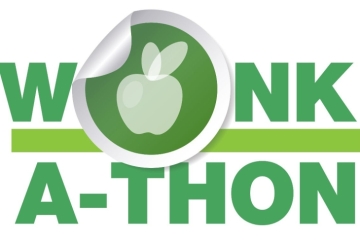Editor’s note: This essay is an entry in Fordham’s 2022 Wonkathon, which asked contributors to address a fundamental and challenging question: “How can states remove policies barriers that are keeping educators from reinventing high schools?” Learn more.
State policies do not stand in the way of reinventing high school.
All the policies and laws needed to move forward are in place. (Not everywhere, of course; yet we have all we need to run enabling experiments at scale.) The basic R & D work has been worked out. A viable design solution sits there. Waiting.
We know exactly what to do to move forward. Can we now summon the will to push through?
(So pervasive has been the lack of will to explore this that it seems a Lucy-and-the-Football effort to pursue it again here. Call me Blockhead! Here we go. Again.)
To review: The most succinct statement of the problem space is Checker Finn’s “The gordian knot of high school reform.” Scores of others have tried. Checker captured the most relevant points in the fewest, clearest, most on-target words.
Scads of design contests have been held. And their results largely forgotten.
Nearly no one has framed the design challenge properly; I liken it to the man who invented the phonograph. (Not Edison.) The song “Au Clair de la Lune” was recorded (listen) a full twenty years before Edison’s phonograph. Yet no one knows the inventor simply because Edison asked the bigger, more pertinent question.
The bigger question of high school redesign is not “what should the adults do?” The bigger question is, “what can and should the students do?” “How do we help them do it, how do we help their teachers, and how do we get out of their way?”
One lens for seeing what they can and should do we’ve dubbed “Pillars of a Hacked High School Experience.”
- Does it develop personal connections?
- Does it allow extended focus and engagement?
- It must dramatically expand literacy/vocabulary
- Does it demand teens produce or earn something?
- Does it give them a new framework of analysis?
- Does it give them credentials for employment?
- Does it introduce and connect them to future paths of learning?
- Does it excite their passion?
To achieve these, we must build new coalitions. What in Disruptive Innovation theory is called a new Coherent Value Network. In this case, including members of the geographic community, but also communities of all kinds. Adults—and other teens!—who can provide on-demand guidance and support.
We must also use the tools that have altered other industry sectors. This includes a broad, new embrace of process flows that use words like “repository,” “fork,” “pull request,” and “branch.”
As to solutions, how many organizations do you know that actually try? That take on the mission of changing high school’s core internals? Not for just one or a handful of schools. Not for a network of certain kinds of schools. But by aiming at every single public high school? And every student within all those schools?
While “industry recognized credentials” (IRC) options have come up short of expectations, the policy is at least ubiquitous, and the framework a step toward something much better.
The IRC framework offers us a new and better token of value than Carnegie Units themselves. With such tokens, we can build the kernel of the new high school operating system. We can now, finally, toss out the old IBM 360 mainframe OS where you took the software IBM gave you, paid a fortune for it, and took your time at the job queue waiting to be grudgingly serviced.
In the new high school OS, teens will get far more choice, teachers will work together with others to better iterate curricula, the where, when, and how will change and improve, and others from the larger outside communities will finally play the role in schools that’s needed.
But only if we fund/run experiments to build this new high school OS.
To be sure, iterating these experiments requires one unique legal/policy tool. Ohio’s Credit Flexibility law offers an experimental R & D environment unique in the nation. This aspect probably isn’t needed in most states. (By running the full experiment here, and spinning out the results, we can find what minimal new laws other states will require.)
Checker’s Point 3: Standard and competencies versus course credits? Eliminating Carnegie Units? If you’re talking about “mastery learning” or “competency-based education,”’, but not talking about high quality curricula, you may be more part of the romantic side of education than the realist side. Scaling, quality, and romance are not a sustainable threesome.
If you are talking curricula (we few, we happy few!), but not thinking/talking curricular transparency, well… let me introduce you to my little friend, K–12 2020–2022. Parents and others suddenly discovered exactly what had worked its ways into (and out of) K–12 lessons. On both what-is-in-there, and what-isn’t-in-there, people everywhere are unhappy.
If you want to make them more happy, transparency across K–12 is now key. For high school redesign, making curriculum transparent has always been a necessary condition.
Point 7: “Vocational education” isn’t what it used to be. Again, the romantics hired by education organizations see carpenters with hammers, plumbers with wrenches. Do you know that a new Ford F-150 has more software than an F-22 fighter? Have you ever heard of biomimicry? Do you have any idea how many robots man our factories? How many more could maintain our roads and sidewalks and buildings if we had the vocational workforce to build, deploy, and maintain them? What small arts businesses and groups have done to change neighborhoods and towns?
Youth groups like 4-H, Scouts, and Boys & Girls’ Clubs get this because they rely on community volunteers. It hasn’t followed into high school as well.
Point 2: The preparation of students entering high school. So much of the work of high school is undoing or dodging damage done to students by not teaching them to read fully and forcing them through grades 4–8 as though they had been. Fortunately, a new coherent value network has already emerged around the sciences of reading development. Centered by an amazing Facebook group, but spinning out into all kinds of partnerships, reading is finally being given the evidence-centered attention it deserves.
Point 1: “Confusion over the end product.” Except, it’s not really up to wonks and educrats to decide this. Especially in re civics education. It’s up to us to give stakeholders the modern tools they need for deeper choice and innovation.
Point 8: “Too damn boring and pointless.” The opportunities to fix this, and to maintain and increase academic quality, are limitless.
We stand at a 1984 moment in K–12. The policy innovations of the past decade give us half the tools needed to transform it to a new and better level. Yet there remain other, untried tools which still must be brought in to play.
As stated above, I know of one organization that works all these design factors. In ten years, it’s not been funded for even $500. (While XQ America has spent around a half billion dollars to #rethinkHighSchool only modestly.)
It’s not policy that’s lacking. It’s will that’s needed.
Perhaps you, dear reader, will choose to exercise such will.










